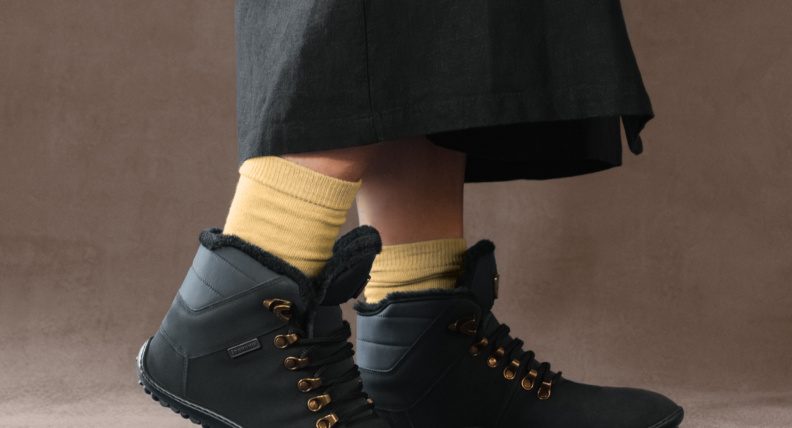You’ve probably seen people walking around in those flat, wide-toed shoes that look nothing like traditional sneakers. Maybe you’re wondering if they’re onto something—or just following another wellness trend that’ll fade away.
Here’s the thing: your feet evolved to work brilliantly without cushioned support. But after years of conventional footwear, transitioning to barefoot shoes isn’t as simple as just swapping your old sneakers for minimalist ones. Let’s dig into what actually happens to your feet when you make the switch, backed by real research (not just marketing hype).
What minimalist shoes do differently
Barefoot shoes strip away everything traditional footwear adds—thick cushioning, elevated heels, arch support, and narrow toe boxes. Instead, they offer a thin, flexible sole that lets you feel the ground beneath you, zero heel-to-toe drop, and enough room for your toes to spread naturally.
This design forces your feet to work the way they’re designed to. When you wear conventional shoes, your foot muscles get lazy. Barefoot shoes wake them back up, demanding that the intrinsic muscles in your feet actually do their job of stabilizing and propelling you forward. No more outsourcing the work to foam and plastic.
The strength benefits (backed by science)
A comprehensive meta-analysis reviewing 28 trials with nearly 1,400 participants found that minimalist footwear training increases the strength of your smaller toes. Your feet also showed lower arch motion during running after incorporating foot exercises alongside barefoot shoes—meaning your arches become more stable and functional.
Think of it like this: if you’ve been wearing a back brace for years, your core muscles would weaken. Remove the brace, and those muscles need to rebuild strength. Your feet work the same way. They’ve been sitting in a supportive shoe-cast, and now they need to remember how to do their actual job.
You’ll probably notice better balance and proprioception (your sense of where your body is in space), stronger intrinsic foot muscles over time, more stable arches during movement, and greater toe dexterity and control. These aren’t minor changes—they affect how you walk, run, and move through your day.
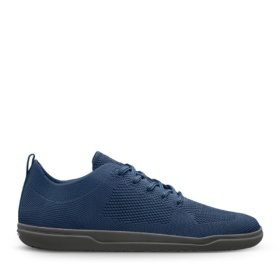
Groundies Active Knit Navy

Freet Flex
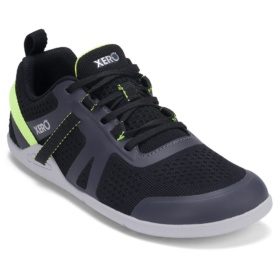
Xero Shoes Prio Neo Men Asphalt/Black
How your running mechanics change
If you’re a runner, barefoot shoes fundamentally alter your gait pattern. Research shows that minimalist footwear combined with gait retraining significantly shifts your footstrike toward the front of your foot rather than heel-striking.
This forefoot landing pattern reduces impact forces traveling through your body. Instead of your heel absorbing the shock and transferring it up through your knee and hip, your ankle and calf muscles do more of the work. Your body becomes better at using its natural shock absorption system—springy tendons and responsive muscles—rather than relying on foam to do the job.
The trade-off? You’ll initially experience more calf and ankle work. A recent study documented increased ankle pressure and calf discomfort in runners new to minimalist footwear. But here’s the important part—this discomfort reflects your body adapting, not permanent damage. Your calves and Achilles simply need time to build the capacity for this workload. Push through it stupidly fast, and you’ll end up injured. Respect the process, and you’ll come out stronger.
The adaptation timeline (be patient)
Here’s where most people mess up: they grab barefoot shoes, go for their usual 5-mile run, and wake up the next day barely able to walk. Your enthusiasm doesn’t speed up your body’s adaptation process. Tendons and ligaments strengthen slowly—much slower than your cardiovascular system improves.
Week 1-2: Start absurdly easy
Wear barefoot shoes around the house for 1-2 hours daily. Take short walks (10-15 minutes) on smooth surfaces. Focus on how your feet feel, not distance covered. If your calves are screaming after a 10-minute walk, that’s your baseline—start there.
Week 3-4: Gradual outdoor introduction
Short outdoor walks (15-20 minutes) work well now. Introduce gentle terrain variation—grass, packed dirt, smooth pavement. If you’re running, limit it to 5-10 minutes every other day. Yes, that little. Your ego might be bruised, but your Achilles won’t be.
Week 5-8: Building tolerance
Extend time by roughly 10% weekly (yes, that slowly). Mix barefoot and traditional shoe days—you don’t need to go cold turkey on your old footwear. Pay attention to calf and Achilles sensations. Mild muscle soreness the next day? Fine. Sharp pain during activity? Back off immediately.
Month 3-6: Full adaptation
Most people reach comfortable daily use around 4-6 months. If you’re a runner, your distances can approach your previous levels around this time. Your feet should feel stronger, not constantly sore. If you’re still struggling, you might be pushing too hard or need professional guidance to address form issues.
Rush this process and you risk Achilles tendinopathy or plantar fascia strain. The scientific evidence clearly documents these injury patterns in people who transition too quickly. Don’t be that person.
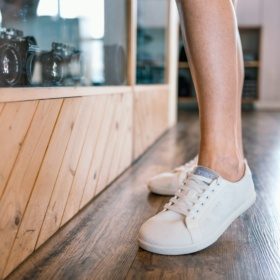
Xero Shoes Dillon Women White
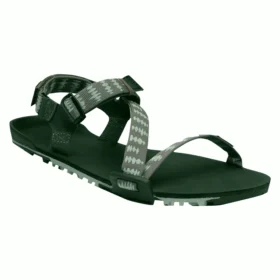
Xero Shoes Z-Trail EV Forest Men
Who benefits most from barefoot shoes
Barefoot footwear works particularly well if you want to strengthen weak feet or rehabilitate from injury (under professional guidance), struggle with balance or proprioception issues, or experience knee pain that might stem from heel-striking patterns. They’re also excellent if you have naturally wide feet or bunions that get squeezed in narrow shoes, enjoy natural movement practices like hiking or trail running, or are teaching your kids healthy movement patterns from an early age.
Runners often report improved running economy with minimalist shoes—your body becomes more efficient at converting energy into forward motion. This happens because barefoot running encourages a more natural cadence and stride pattern. You stop overstriding (landing with your foot way out in front of your body) and start using your elastic tissues more effectively.
People with desk jobs also benefit enormously. If you sit all day, your feet barely do anything—they’re just propping you up under the desk. Barefoot shoes at least give them some stimulation and strength work during your commute and lunch break.
When to proceed cautiously
Be realistic about your starting point. If you have existing Achilles problems, severe flat feet with accompanying pain, or significant structural foot issues, consult a podiatrist or physical therapist before switching to minimalist footwear.
The research identifies that barefoot shoes shift work from your knee joint to your ankle and calf. If you already have ankle instability or chronic Achilles pain, jumping straight into barefoot shoes without proper guidance could worsen these issues. You need to address those problems first, then transition carefully with professional oversight.
People with diabetes who’ve lost foot sensation should stick with protective footwear—the ground feedback that makes barefoot shoes beneficial becomes irrelevant if you can’t feel it, and the risk of unnoticed injury increases. In this case, protection matters more than natural movement.
That said, many people with “weak ankles” or minor foot problems actually benefit from barefoot shoes over the long term. The key is approaching the transition conservatively and building strength gradually rather than expecting immediate results.
What to expect realistically
Let’s be clear about something: the studies we have mostly followed people for short periods (often just 15 minutes of measurement). We don’t have decades of data on what happens if you wear exclusively barefoot shoes for your entire adult life.
The evidence quality is rated as low to very low due to limited long-term studies and methodological limitations. That doesn’t mean barefoot shoes are bad—it means we need more research. What we do know suggests foot strength improvements and gait changes that could benefit many people, but we’re making educated inferences about long-term effects.
You might experience temporary discomfort as your feet adapt. This is normal. Mild muscle soreness in your calves, feet, and even your hips is expected as your movement patterns shift. What’s not normal is sharp pain, persistent swelling, or pain that worsens over days rather than improves. Listen to your body, not your timeline.
Some people adapt faster than others. If you’re young, active, and already doing barefoot activities occasionally, you might progress quickly. If you’re older, sedentary, or have decades of conventional shoe wear, expect a slower adaptation. Neither is wrong—just different starting points.
Making the transition work
Here’s a practical approach that respects your body’s adaptation timeline without turning you into a barefoot zealot:
Start with casual wear by choosing comfortable everyday minimalist shoes from Groundies for walking around the house and doing errands. Don’t throw out your conventional shoes immediately—alternate footwear between styles. You might wear barefoot shoes in the morning when you’re fresh and switch to traditional shoes for your afternoon run.
Add foot-strengthening exercises like toe spreading (actively spreading your toes apart), arch doming (lifting your arch while keeping toes and heel planted), and calf raises. These accelerate adaptation and reduce injury risk. Choose your surfaces wisely—begin on forgiving surfaces like grass or rubber tracks before tackling concrete or rocky trails.
Monitor your body’s response carefully. Some muscle soreness is expected and actually indicates productive adaptation. Joint pain is a red flag to slow down or get professional assessment. Consider working with a running coach or physical therapist who can assess your form and suggest modifications, especially if you’re dealing with existing injuries or biomechanical issues.
For runners specifically, brands like Xero Shoes offer models designed for various terrains, from road to trail. Freet focuses on flexibility and ground feel, while Leguano emphasizes that barely-there sensation. Different brands work better for different foot shapes and activities—don’t assume the first pair you try will be perfect.
Your feet can do more than you think
Barefoot shoes aren’t magic. They won’t fix years of movement dysfunction overnight, and they’re not right for everyone in every situation. But for many people, they offer a way to rebuild foot strength and more natural movement patterns that conventional footwear has suppressed.
Your feet contain 26 bones, 33 joints, and over 100 muscles, tendons, and ligaments. They’re incredibly sophisticated structures that traditional footwear often restricts and weakens. Barefoot shoes give those structures a chance to function as designed—not as passive platforms getting carried around, but as active, responsive, intelligent parts of your movement system.
The transition requires patience, realistic expectations, and attention to your body’s signals. Some activities genuinely benefit from cushioned, supportive footwear (hiking with a heavy pack, working on construction sites). But for everyday movement and many athletic pursuits, minimalist footwear offers a compelling path toward stronger, healthier feet.
Ready to see what your feet can actually do? Explore minimalist options from brands like Mukishoes and start your transition slowly. Your feet—and probably your knees—will thank you several months from now.
